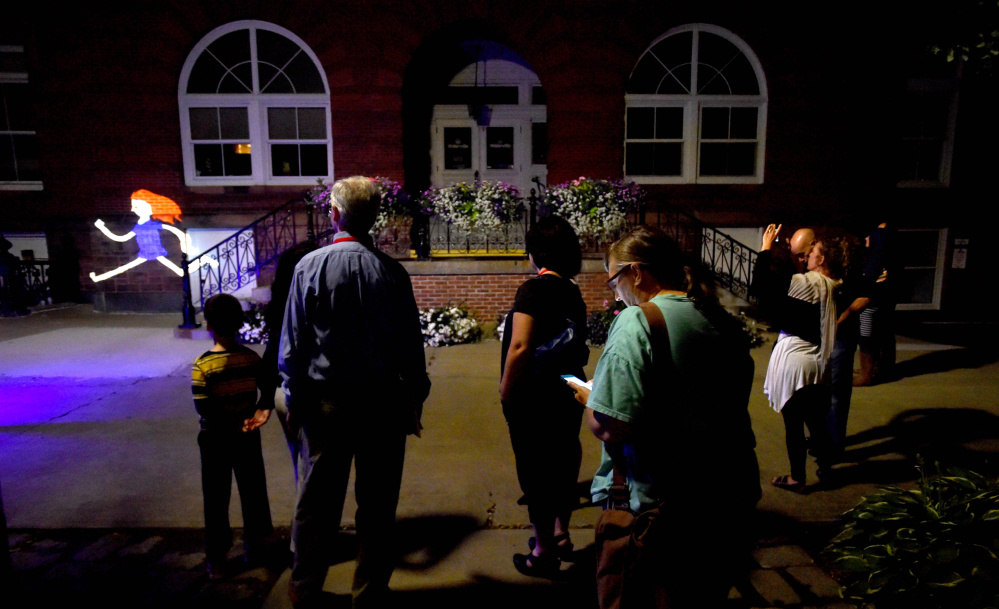WATERVILLE — A creative duo from Sao Paulo, Brazil, traveled to the Maine International Film Festival to project their art onto the buildings in downtown Waterville.
The couple, Ceci Soloaga and Ygor Marotta, are known as VJ Suave. They travel the world to display their animations and teach people how to make their own, spreading the idea that art has no limit.
Soloaga, 33, and Marotta, 29, use custom tricycles, which they’ve dubbed “suaveciclos,” fitted with projectors, computers, speakers and batteries to show their animations on the sides of buildings, highway ramps, streets and even lakes.
They’ve performed in Russia, China, Argentina, Switzerland, Japan and more, and this week they came to Maine for the annual film festival.
On Friday, the pair lit up Castonguay Square with their animations. On Saturday they held two animation workshops for adults and children in Studio 93 on Main Street.
Soloaga and Marotta met in Argentina many years ago, Soloaga said. She originally did photography and then collage art on PhotoShop. Marotta went to school for graphic design. Soloaga entered the world of animation because of its freedom, and she’s taught herself everything.
“You have a lot of possibilities to create a crazy world that you like,” she said.
Around 2009, they started projecting their work in the streets because there they were free to communicate “whatever we like,” Marotta said.
The art world can be difficult because artists have to apply to show in galleries and get people to like their work, Soloaga said. This way, they could stick to doing creating what they wanted but still have a way to share it with people.
One video they showed during the morning workshop on Saturday, “Homeless,” was supported by MTV. They went around the more depressed parts of the city of Sao Paulo in a van with a crew to help them. When the project was finished, they didn’t have enough money to buy their own van, Marotta said.
“The only option was to buy a bicycle,” he said.
They ride around cities, illuminating them with their art, as thousands of people, especially children, follow them and interact with the colorful, cartoonlike drawings. Sometimes they do live performances, where they use only Tagtool to draw, and call it “digital graffiti.”
Other times, they draw things out by hand or use watercolor painting and then scan that into the computer to make animations frame by frame, and finally map the surfaces on which they want to project. They follow a traditional animation model, Marotta said, animating at 12 frames per second.
Nine adults came to the first workshop in the morning and sat huddled around one rectangular table. Soloaga and Marotta first showed videos of their work and then a video from the company that made the animation application they sometimes use to draw.
Those who came to the workshop sat hunched over in their chairs working on their iPads in the squished space. Marotta pointed out important details to keep in mind, such as making the mouth of something two layers so it can open and close. He then taught everyone how to animate their work. As he talked, Soloaga walked around to help people individually who were lost.
People could save their animations at the end and have their work projected on the screen in the small room.
Send questions/comments to the editors.




Comments are no longer available on this story